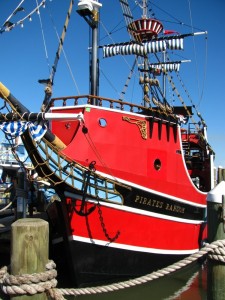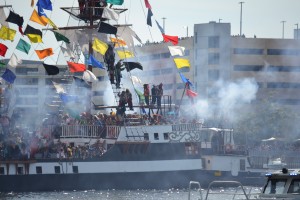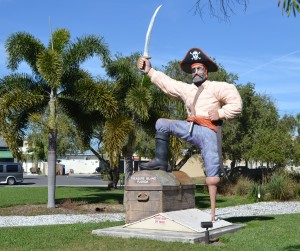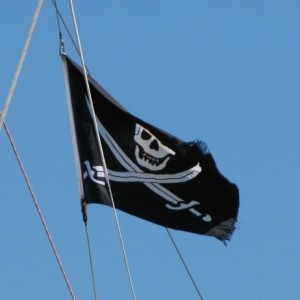Outlaws of the High Seas

While the pirates of the Caribbean have become a household name, it is also true that those same pirates roved beyond the Caribbean, to the Carolinas and westward to the Gulf Coast of Florida, and even to New Orleans. While the notion of pirates is romantic, the truth might surprise you. Piracy began long before the Golden Age of Piracy, with which we are most familiar, occuring in the 1700s and 1800s. Men –and women –boarded ships to plunder merchant vessels from the earliest times of shipping history. All parts of the world knew piracy, wherever ships were sailed. The pirates plying the waters of the North American coast, the Bahamas, and the Antilles were the most recent version, existing shortly before the nations of Europe, along with that of the United States, agreed to abolish the practice. But, if piracy is an illegal activity to begin with, how could abolishing it lead to its end? Read on to discover why it worked.
Marauding Pirates

Piracy is labeled as the act of theft or plunder, by means of violence, committed by the crew of a ship, usually against another ship. Piracy’s heyday came when gold was discovered in the Americas. Attacking a ship laden with gold taken from the Native American tribes offered a hefty reward. Pirates worked on their own, keeping all the booty taken from their attacks to themselves. Numerous pirates became rich, and sometimes famous, based on the success of their exploits. Because of the routes of the American treasure shipments, the Caribbean and the coast of Florida were well-known hideouts for pirates. You might think that the major countries who sailed the Atlantic Ocean and the Caribbean worked hard to put an end to piracy. The truth, is that they did not. They were, in fact, guilty of the very same crime.
Attack of the Privateers

During times of war, it benefited one side to attack the merchant vessels of the other. Interrupting shipments of goods crippled the supply routes of the enemy. In order to entice ship crews to become privateers, countries would commission a privately owned vessel to engage in privateer attacks. Often, the reward for plundering of enemy ships was the cargo itself. With such bounties to choose from, privateer crews attacked with relish. Unfortunately, that also led to violence. More than one privateer gained fame via a reputation for cruelty. If privateers sound a lot like pirates, it’s because they were. By 1908, the countries invovled agreed to a ban, thus ending further commissions for privateer vessels.
Buccaneers of the Caribbean

Blurring the line between pirate and privateer were the buccaneers. Buccaneers behaved much like privateers, in that they were well organized. They did not, however, have official permission from governments to “do business.” Their name comes from “smoked meat” which, apparently, they did while in the West Indies Islands. Their ilk was more specific than other pirates of the world, being best known for plundering Spanish ships in the Caribbean and sometimes on the west coast of Africa. Their trade began as meat sellers in the West Indies, but looting ships and attacking coastal towns proved more profitable. Buccaneer ships, it seems, operated much like businesses, the loot being divided equally. They also attacked land targets, which true sea pirates did not often do. Because of the benefit of impeding enemy ships, many governments turned blind eyes to the activities of the buccaneers.
End of the Golden Age of Piracy

The lines between buccaneers and privateers, and their pirate counterparts were often indistinct. Both privateers and buccaneers went outside the guiidelines of the governments that supported them. The violence committed by all three groups became notorious. With an overall disruption of shipping by pirate and pirate-like activities, governments began to turn against the practice. By the 1900s, it had fallen into disfavor. The days of governments shaking hands with privateers were over, a withdrawal of commissions for such ventures ensuing. That left the outlaw pirates alone, with even their home ports eventually turning against them, leading to the end of the so-called Golden Age of Piracy.
Florida Pirates
 More pirates, privateers, and buccaneers came to Florida’s shores than you might imagine. Pirate treasure stories abound, and pirate festivals throughout the state are popular. Be sure to keep up with our continuing pirate stories, in which we will tell you who among the world’s most famous pirates visited our area.
More pirates, privateers, and buccaneers came to Florida’s shores than you might imagine. Pirate treasure stories abound, and pirate festivals throughout the state are popular. Be sure to keep up with our continuing pirate stories, in which we will tell you who among the world’s most famous pirates visited our area.




Leave a Reply
Be the First to Comment!